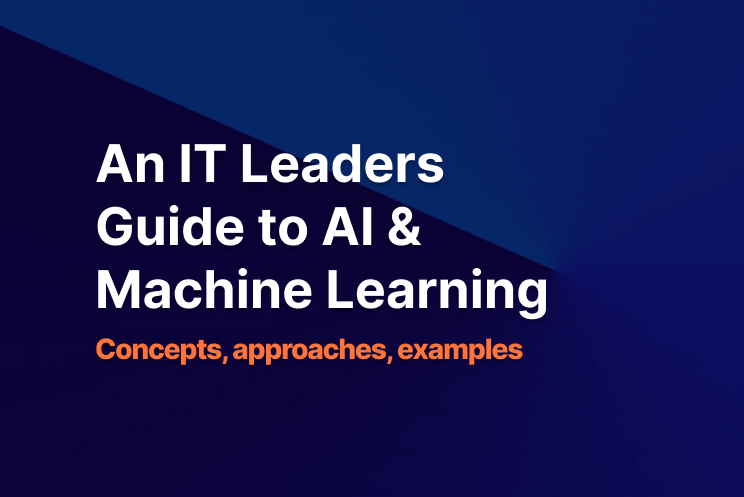View the complete guide: An IT Leaders Guide to AI & Machine Learning
Recent advancements in artificial intelligence (AI) and machine learning have demonstrated the ability to drive operational efficiencies and unlock new revenue opportunities across industries. However, with the breadth of methods and technologies now available, many organisations are struggling to determine the right approach for their business needs and objectives.
To cut through the complexity, we have put together an extensive guide that equips IT leaders with the knowledge to evaluate AI solutions and make informed adoption decisions.
Within the guide, we cover:
Defining Core Concepts
We clearly define foundational terminology, distinguishing between the umbrella term "artificial intelligence" and more specific subsets like machine learning and deep learning. Covering key concepts like supervised learning, reinforcement learning, neural networks, and transformers to establish a baseline understanding before diving into practical applications.
Tracing the Evolution of AI
We cover a brief history of AI, highlighting key innovations that have expanded its capabilities over time, tracking the progression from early logic and rules-based systems to machine learning and deep learning breakthroughs. This background contextualises recent advancements like natural language processing, computer vision, and generative language models.
Assessing the Current State of AI
Transformers represent the frontier of language AI, underpinning sophisticated models like ChatGPT and Google's Bard. We analyse why transformer architectures are uniquely equipped to understand context and human language, exploring the real-world impact across areas like customer service, marketing, and process automation.
Getting Started: Key Considerations
For leaders exploring AI solutions, the guide details three pivotal considerations:
Data types and outputs:
Clarifying whether you need to analyse existing data or generate new data will inform architectural decisions.
Model selection:
Weigh the benefits and limitations of leveraging cloud services versus configuring your own models.
Hosting options:
Compare trade-offs of hosting in the cloud, on-premises, or via containers.
Cloud Services: An Accessible Entry Point
Many organisations are turning to AI cloud services from AWS, Azure, and Google Cloud for pre-built models and infrastructure. The guide analyses the capabilities of leading providers, specifically diving into Azure's machine learning, cognitive services, and applied AI offerings.
We provide interactive breakdowns to showcase available services across vision, language, speech, search, and analytics use cases. Real-world examples demonstrate how brands have driven value by classifying images, forecasting time series data, optimising workflows, and extracting insights.
Building Custom Models
For advanced customisation, the guide explores options like TensorFlow, PyTorch, and Scikit-Learn for configuring deep learning models. It outlines best practices for preparing data, selecting algorithms, training models, and calculating key performance metrics at each phase of development.
Architectural diagrams map out end-to-end workflows spanning data inputs, model development, deployment, and monitoring. With case studies highlighting the benefits of tailoring models to address challenges in areas like energy forecasting, task scheduling, and price optimization.
Maintaining Model Accuracy Over Time
Since data evolves, decision reliability hinges on continuous model maintenance. The guide provides a 6-step methodology encompassing data inputs, performance benchmarking, tools for hyperparameter tuning, version control for fallback, expanding training data diversity, and frequency of evaluation to effectively maintain and retrain machine learning models.
Industry Case Studies
With an understanding of the machine learning cycle established, we look at how leading organisations have created powerful machine learning solutions by leveraging cloud services or defining their own model using a machine learning framework.
Take the Next Step in Leveraging AI and Machine Learning
Equipped with a clear framework spanning concepts, technologies, and real-world applications, IT leaders can chart an informed path to AI adoption. Whether opting for turnkey cloud services or bespoke model development, this guide elucidates key factors to drive meaningful business impact.


